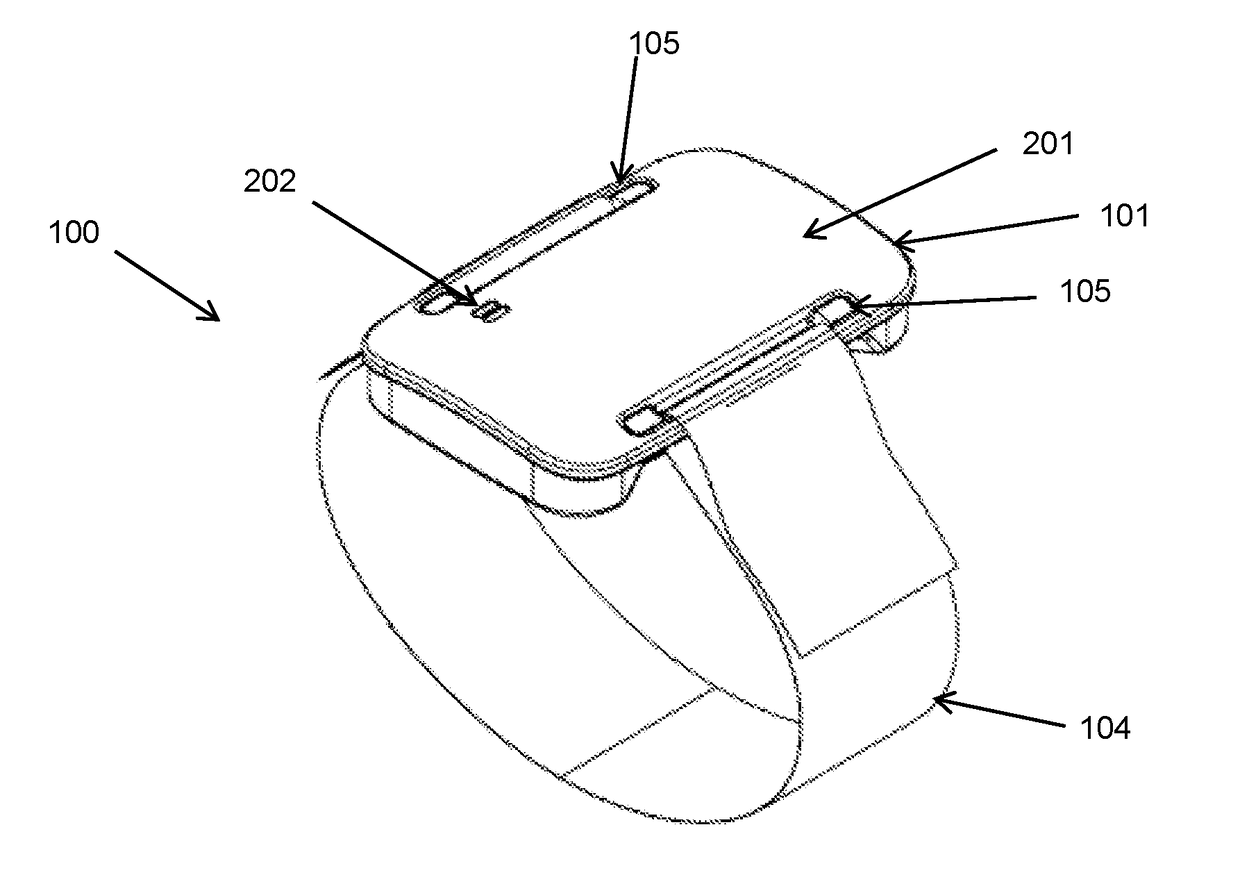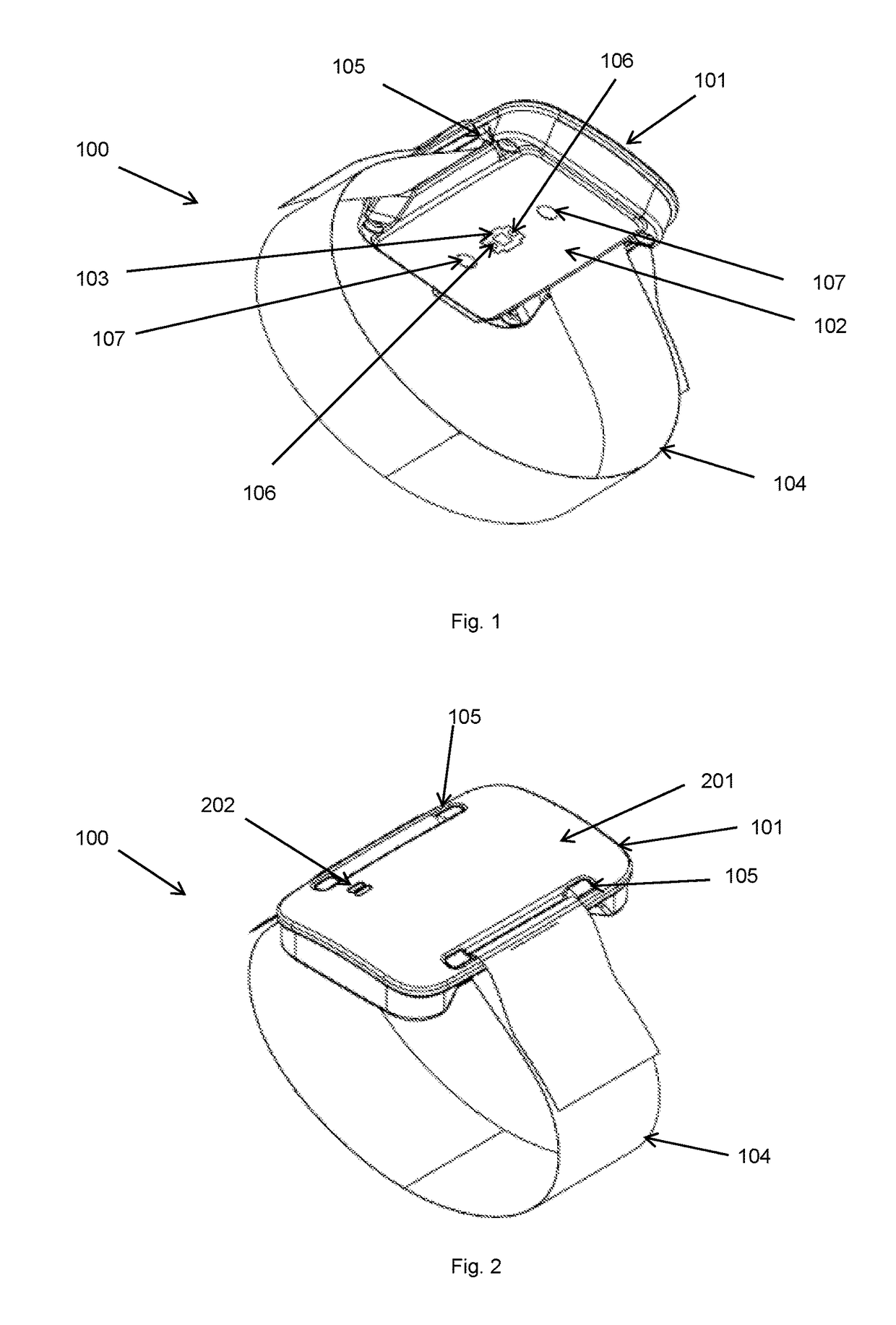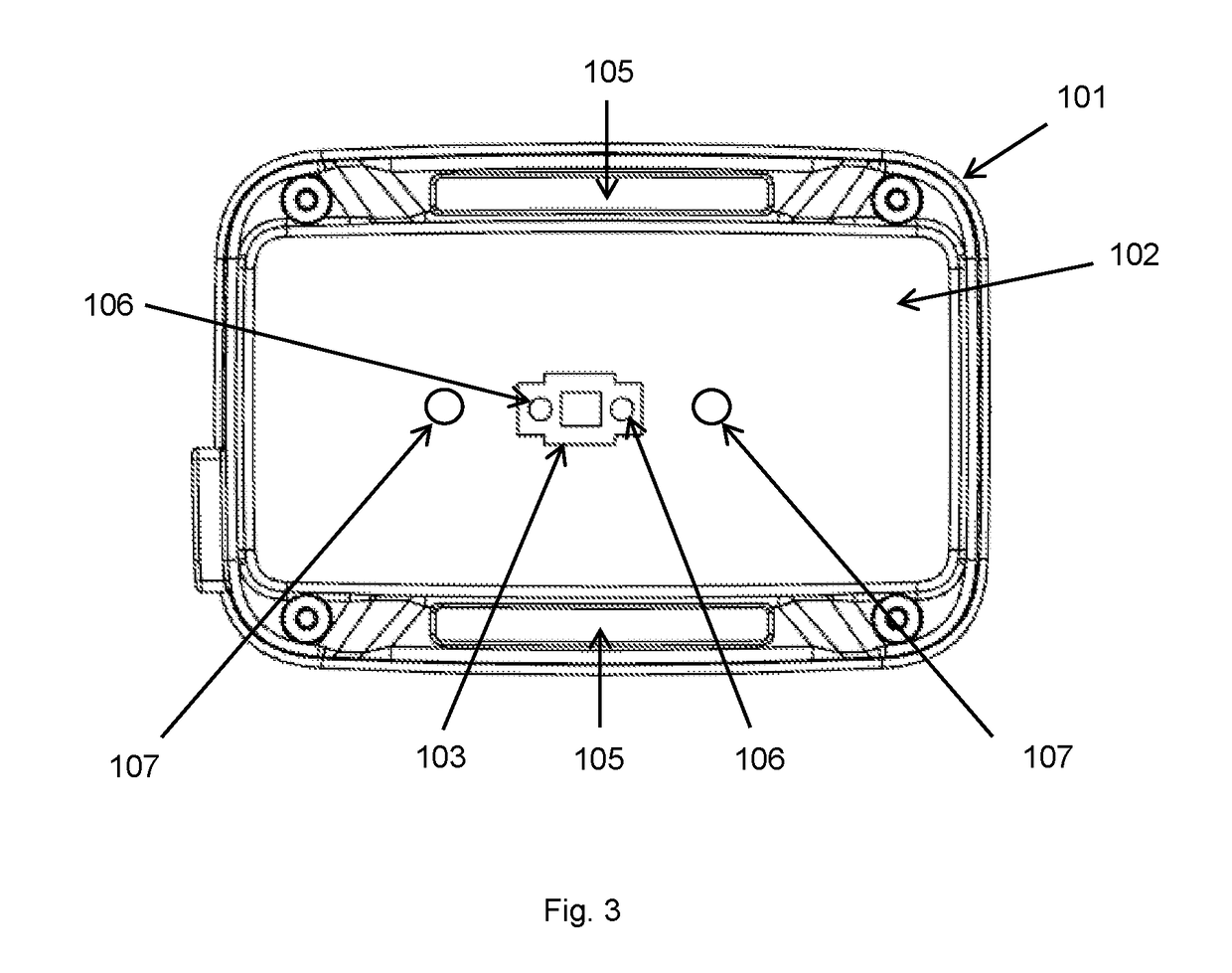Photoplethysmographic device for measuring a heart rhythm
- Summary
- Abstract
- Description
- Claims
- Application Information
AI Technical Summary
Benefits of technology
Problems solved by technology
Method used
Image
Examples
Embodiment Construction
[0024]FIG. 1 shows a perspective bottom view of the photoplethysmographic device 100 having a housing 101 and a strap or wristband 104. The housing 101 has a contacting surface 102 at the bottom side of the housing 101, which is to be brought into contact with a subject's skin. The contacting surface has a photoplethysmographic (PPG) sensor 103, comprising a photodetector and Light Emitting Diodes 106 (LEDS) positioned laterally of the photodetector. The device 100 can for example be applied to the subject's wrist, however other body parts, i.e limbs and parts thereof may also apply. The strap or wristband 104 can for example be connected to the housing 101 by pulling the strap or wristband end through recesses 105 of the housing. This way a user or wearer can manually tighten the device 100 as much as is required. On the contacting surface 102 one or more pressure sensors 107 can be provided. The pressure sensors 107 can be of the resistive type, such as Flexiforce™ sensors, which ...
PUM
 Login to View More
Login to View More Abstract
Description
Claims
Application Information
 Login to View More
Login to View More - R&D
- Intellectual Property
- Life Sciences
- Materials
- Tech Scout
- Unparalleled Data Quality
- Higher Quality Content
- 60% Fewer Hallucinations
Browse by: Latest US Patents, China's latest patents, Technical Efficacy Thesaurus, Application Domain, Technology Topic, Popular Technical Reports.
© 2025 PatSnap. All rights reserved.Legal|Privacy policy|Modern Slavery Act Transparency Statement|Sitemap|About US| Contact US: help@patsnap.com



